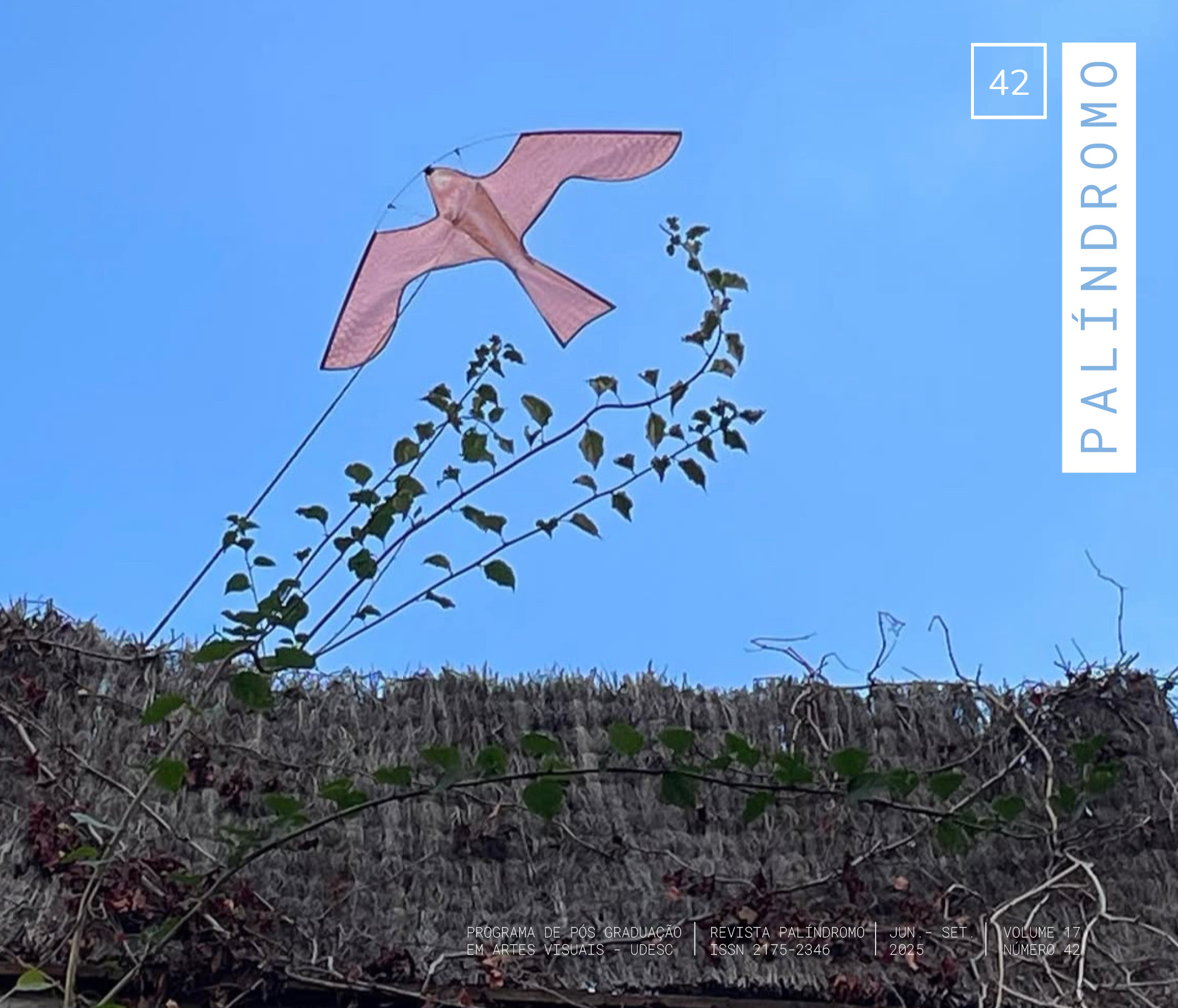Pode a mediação cultural tratar o racismo? Lidando com respostas controversas à exposição “Dos Brasis”
DOI:
https://doi.org/10.5965/2175234617422025e0010Parole chiave:
arte e pensamento negro, ediação cultural, psicaná-lise, públicos, racismoAbstract
O texto desdobra aspectos recolhidos em entrevistas com a curadora pedagógica e as mediadoras da exposição “Dos Brasis: Arte e Pensamento Negro”, apresentada no Sesc Belenzinho, entre 2023 e 2024, a fim de abordá-la da perspectiva de sua recepção. Adota-se metodologia descritivo-analítica para sondar a possibilidade de a mediação cultural lidar com o racismo expresso por parcelas do público em suas respostas a obras artísticas afro-centradas, com vistas a tratá-lo em mais de um sentido. Para isso, é ensaiada intersecção com o método psicanalítico, em que a escuta e o diálogo permitem, de um lado, acolher discursos depreciativos e, de outro, indagá-los com o fito de vasculhar suas origens. Constata-se que a mediação desenvolvida no âmbito da exposição, no que toca às manifestações racistas, logrou praticar formas consequentes de tratamento pela fala.
Downloads
Riferimenti bibliografici
BRASIL. Lei nº 10.639/2003, de 9 de janeiro de 2003. Altera a Lei nº 9. 394, de 20 de dezembro de 1996. Diário Oficial da União, Poder Executivo, Brasília.
CIRILO, José Carlos. “O país plural: diversidade e protagonismo negro”. In: DOS BRASIS: Arte e Pensamento Negro / Serviço Social do Comércio; Curadores: Igor Simões; Lorraine Mendes; Marcelo Campos. São Paulo: Sesc São Paulo, 2023, p. 3.
CURADORA PEDAGÓGICA DA EXPOSIÇÃO “DOS BRASIS”. “Memórias ‘Dos Brasis’ via programa educativo”: depoimento. [8 de março, 2024]. São Paulo: Registros em áudio do Sesc Memórias. Entrevistas concedidas a Camila Vitale, Diogo de Moraes Silva, Elmo Sellitti Rangel, Lívia Lima da Silva e Michele Cristiane Celestino.
DIAS, Mauro Mendes. O discurso da estupidez. São Paulo: Iluminuras, 2020.
FREYRE, Gilberto. Casa-grande e senzala. Rio de Janeiro: José Olympio, 1958.
MACHADO, Janaína. “Ladinidades amefricanas como traço pedagógico”. In: DOS BRASIS: Arte e Pensamento Negro / Serviço Social do Comércio; Curadores: Igor Simões; Lorraine Mendes; Marcelo Campos. São Paulo: Sesc São Paulo, 2023a, pp. 17-19.
MACHADO, Janaína. “Programa Educativo – Dos Brasis: Arte e Pensamento Negro”. São Paulo, 2023b (mimeo.).
MEDIADORAS DA EXPOSIÇÃO “DOS BRASIS”. “Memórias ‘Dos Brasis’ via programa educativo”: depoimento. [26 de março, 2024]. São Paulo: Registros em áudio do Sesc Memórias. Entrevistas concedidas a Camila Vitale, Diogo de Moraes Silva, Elmo Sellitti Rangel, Lívia Lima da Silva e Michele Cristiane Celestino.
MEIRELES, Maurício. “Aceito a expressão, mas racismo não é estrutural no Brasil, diz Muniz Sodré”. Folha de São Paulo, 18 mar. 2023.
MIRANDA, Danilo Santos de. “Direito de se reconhecer nas ancestralidades”. In: DOS BRASIS: Arte e Pensamento Negro / Serviço Social do Comércio; Curadores: Igor Simões; Lorraine Mendes; Marcelo Campos. São Paulo: Sesc São Paulo, 2023, p. 5.
NASCIMENTO, Abdias. O quilombismo: documentos de uma militância pan-africanista. São Paulo/Rio de Janeiro: Editora Perspectiva/Ipeafro, 2019.
RIBEIRO, Luciara. “O ensino das artes afro-brasileiras na construção de olhares e sujeitos críticos”. In: CADERNO EDUCATIVO Dos Brasis: Arte e Pensamento Negro / Serviço Social do Comércio; Curadoria Educativa: Janaína Machado. São Paulo: Sesc São Paulo, 2023, pp. 31-33.
ROUDINESCO, Elisabeth. Por que a psicanálise? Tradução Vera Ribeiro. Rio de Janeiro: Zahar, 2000.
SIMÕES, Igor; MENDES, Lorraine; CAMPOS, Marcelo. “dos brasis: Arte e Pensamento Negro”. In: DOS BRASIS: Arte e Pensamento Negro / Serviço Social do Comércio; Curadores: Igor Simões; Lorraine Mendes; Marcelo Campos. São Paulo: Sesc São Paulo, 2023, pp. 9-12.
SODRÉ, Muniz. O fascismo da cor: uma radiografia do racismo nacional. Petrópolis, RJ: Vozes, 2023.
Downloads
Pubblicato
Come citare
Fascicolo
Sezione
Licenza
Copyright (c) 2025 Diogo de Moraes Silva

TQuesto lavoro è fornito con la licenza Creative Commons Attribuzione 4.0 Internazionale.
DECLARAÇÃO DE DIREITOS AUTORAIS
a. Os artigos publicados pela revista são de uso gratuito, destinados a aplicações acadêmicas e não comerciais. Todos os direitos autorais são atribuídos à revista. Os artigos cujos autores são identificados representam a expressão do ponto de vista de seus autores e não a posição oficial da Revista Palíndromo. O (s) autor (es) compromete-se sempre que publicar material referente ao artigo publicado no Palíndromo mencionar esta publicação da seguinte forma:
Este artigo foi publicado originalmente pela revista Palíndromo em seu volume (coloque o volume), número (coloque o número) no ano de (coloque o ano) e pode ser acessado em: http://www.revistas.udesc.br/index.php/palindromo
b. Plágio, em todas as suas formas, constitui um comportamento antiético de publicação e é inaceitável. A revista Palíndromo utiliza o software iThenticate de controle de similaridade


